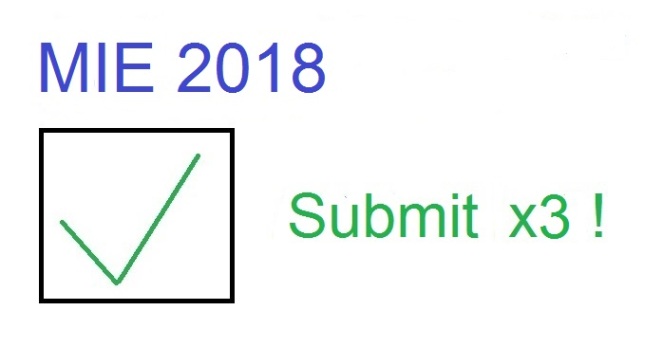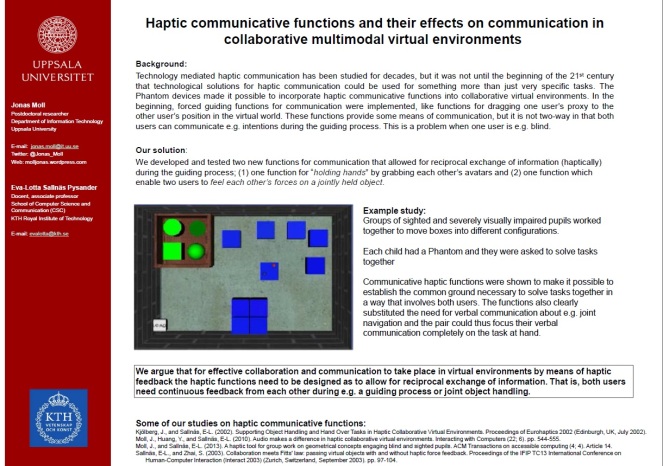Experiences from a prototyping workshop in a basic HCI course

As I have written earlier on this blog, Mohammad Obaid and I are course responsible for a basic HCI course during this autumn. The course focuses on a project, starting with problem definition and requirements elicitation and ending with a redesign of a prototype after an initial evaluation with users. One big difference in this course round compared to earlier ones is that the students are not starting off with an existing interface to evaluate/redesign, but they rather have to design and evaluate a new solution to a problem they identify themselves. This change – to focus more on the process than on interfaces – was inspired by a similar course I ran at KTH the last year I worked there. Each year the projects have a common theme and this year it is “Improving the biking experience”.
One of the new elements that were inspired by the KTH counterpart was a creative prototyping workshop. The workshop, in which students should build physical prototypes with different materials the teacher provided, was very appreciated at KTH but had never been tried before in our course in Uppsala.
Before the workshop both the students and I needed to prepare material. The project groups should prepare simple sketches based on the persona and scenario they had developed during a seminar two weeks earlier. I had to collect different materials that the students should work with during the workshop. The material I brought to the workshop (except for the scissors which were taken by the groups before I took the picture) can be seen in the blog image above.
Each of the three 45 minutes workshop sessions (four project groups participated in each session) started out with a short introduction from me, where I introduced the overall purpose and the material and highlighted the importance of having the persona/scenario in mind while designing. During the remainder of the sessions the students worked with building their prototypes.
Overall, I think the workshop was a success. There was a lot of creativity going on and as far as I could see everyone was involved in discussions and hands-on work during the entire sessions. It is not very often I see this kind of continuous deep engagement during higher education seminars. One group from the second session even stayed during the third one and one group from the third session stayed in the room after everyone else had left! Almost all types of material (except the stapler) was used by at least some of the groups (even the magnets!).
As far as I can understand from what I saw during the workshop sessions, this course element was as appreciated by students in our current course as it was at KTH. We will, however, have to wait until the course evaluations for the final verdict! 🙂
The results of the prototyping sessions clearly showed that the project groups have been successful in identifying relevant problems/users/scenarios. The solutions I saw were creative and it may even be possible to use some of them as basis for commercial products! At the end of the course the students in each seminar group (containing four project groups) will vote for the project group they think has come up with the best design (voting criteria will be defined shortly and it is of course not allowed to vote for one’s own group). The three finalists will later compete for the “best project award”. It will be very interesting to see the final result – as it looks at this point any group can become a finalist!

